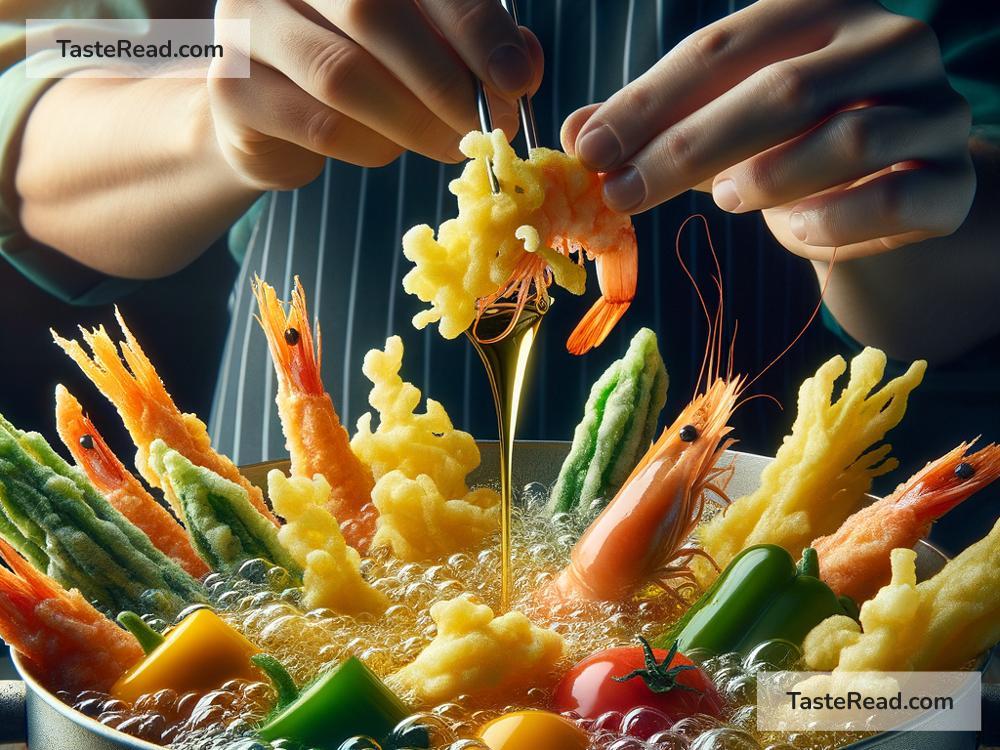Unlocking the Art of Japanese Tempura: A Beginner’s Guide
Entering the world of Japanese cuisine brings you face to face with an array of intricate and flavorful dishes that can fascinate and intimidate in equal measure. Among these, Tempura holds a special place – a dish revered for its light, crispy texture and subtle flavors. Learning the secret techniques behind making perfect Tempura is akin to being initiated into a culinary tradition that dates back centuries. In this blog, we journey into the heart of this art, breaking down the process into simple steps that even beginners can follow.
Understanding Tempura
Tempura is a Japanese dish of seafood or vegetables that have been lightly battered and deep-fried, known for its distinctive light and airy texture. The technique is believed to have been introduced to Japan in the 16th century by the Portuguese, but over the years, it has been refined and transformed into a uniquely Japanese culinary experience.
The Ingredients: Simplicity is Key
The beauty of Tempura lies in its simplicity, emphasizing the quality of the ingredients over elaborate preparation techniques. Here’s what you need to get started:
- Fresh Ingredients: Whether it’s shrimp, fish, or an array of vegetables like bell pepper, sweet potato, broccoli, or asparagus, ensuring they are fresh is paramount. The freshness enhances the natural flavors, which are integral to a good Tempura.
- Tempura Batter: The secret to the light and crispy texture. Traditional Tempura batter consists of cold water, egg, and wheat flour. The colder the batter, the better the texture.
- Oil for Frying: A neutral oil with a high smoke point, such as canola or vegetable oil, is ideal for frying Tempura.
Mastering The Batter: The Heart of Tempura
The Tempura batter is where the magic happens, and achieving the perfect consistency is crucial. Here are some tips:
- Ice Cold Water: Use ice-cold water when mixing your batter. The low temperature inhibits gluten formation, resulting in a lighter, crisper coating.
- Minimal Mixing: Overmixing the batter activates the gluten in the flour, leading to a heavier, bread-like texture. Mix the batter with a few swift strokes, lumps are perfectly fine.
- Egg: Adding an egg is optional but contributes to the richness of the batter. Ensure it’s cold, and gently beat it before adding to the mix.
The Art of Frying
Frying Tempura is a dance of timing and temperature. Here are the steps and tips to guide you through:
- Preparing the Ingredients: Cut the ingredients into bite-sized pieces. For vegetables, make sure they are dry to avoid splattering oil.
- Heating the Oil: Heat the oil to around 340-360°F (170-180°C). Maintaining this temperature is crucial for that quintessential light and airy texture.
- Dipping and Coating: Once the oil is ready, dip your ingredients into the batter, ensuring a thin and even coat. Shake off any excess batter before gently placing them in the oil.
- Frying: Don’t overcrowd the pot; fry in small batches. This helps maintain the oil temperature and ensures each piece cooks evenly. The frying time will vary depending on the ingredient but generally ranges from a few minutes for vegetables to slightly longer for seafood.
- Draining: Use a wire rack or paper towels to drain the excess oil from the fried Tempura, preserving its lightness.
Serving and Enjoying Tempura
Tempura is best enjoyed fresh, straight out of the fryer. It’s typically served with a light dipping sauce made from dashi, mirin, soy sauce, and grated daikon radish or simply with a sprinkle of fine sea salt to enhance the natural flavors of the ingredients.
Experiment and Enjoy
One of the joys of making Tempura is experimenting with different ingredients to discover your favorite combinations. From classic shrimp and vegetables to more adventurous choices like avocado or leafy greens, the possibilities are endless.
Learning the secret techniques of Japanese Tempura doesn’t require complex skills, just attention to detail and respect for the ingredients. By embracing the simplicity and elegance of this dish, you can create a myriad of light and crispy delights that are sure to impress. Happy frying!
Learning the art of Tempura opens up a new dimension in your culinary adventures, blending simplicity with the elegance of Japanese cuisine. Remember, perfection comes with practice. So, don your apron, heat the oil, and start your journey into the delicate world of Tempura. Happy cooking!


